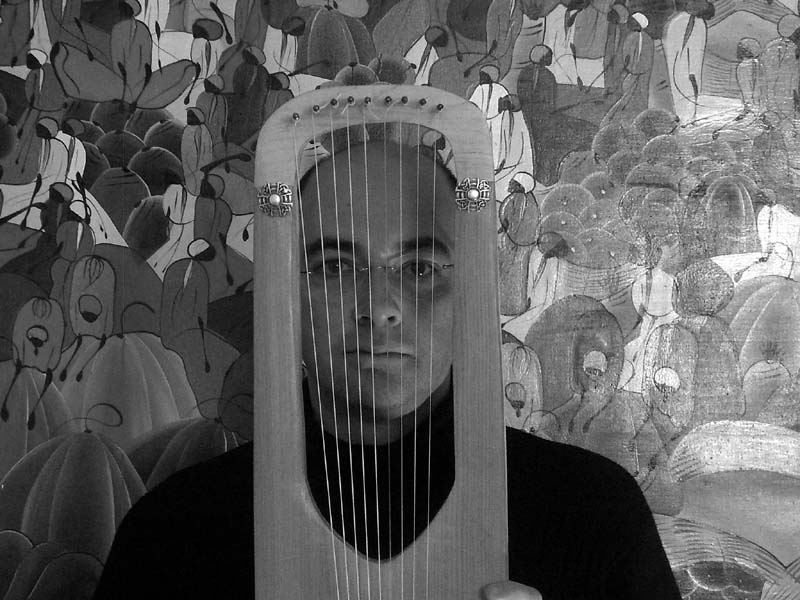
EPOS
music in the carolingian era

EPOS: Reawakening the Carolingian Voice
An interview with Stefano Albarello
After decades devoted to the study and performance of medieval music —
both sacred and secular — spanning five centuries of history, in 2009
Stefano Albarello turned his attention to an extraordinary and
little-known musical frontier: the world of the Carolingian era.
What is Epos?
“Epos is a project I had envisioned for many years,” Albarello
explains, “but it required a certain maturity — which, after more than
twenty years of studying medieval music, I think I’ve finally acquired.
The idea is to reconstruct a small but fascinating body of secular
songs from the Carolingian period — a repertoire that very few have
explored, and that many have considered impossible to perform.”
Why “impossible”?
“Mainly because of the complexity of the notation,” he says. “The
manuscripts use what appears to be adiastematic notation — neumes that
indicate the number of notes but not their pitch. For this reason,
scholars have long doubted whether those songs could ever be performed
again.”
So what convinced you to try a modern reconstruction?
“While studying the notation more closely, I realized that it actually
offers subtle clues about pitch — I would call it semi-diastematic.
Combined with what we know about compositional practices from sacred
chant, it becomes possible to reconstruct those melodies with a degree
of authenticity.”
Isn’t there a risk of creative interpretation?
“To some extent, yes — but within the mindset of that period,”
Albarello explains. “The scribes who dared to add melodies to poetic
texts in non-musical manuscripts were themselves engaging in creative
experimentation. Today, if we free ourselves from overly rigid
philological dogmas — which, if taken literally, would prevent projects
like this — we can rediscover musical gems that would otherwise remain
unheard.”
What kinds of songs are included in Epos?
“The repertoire reflects the intellectual spirit of the Carolingian
Renaissance, deeply rooted in classical Latin culture,” Albarello says.
“There are epic songs tied to the Carolingian dynasty — including a
lament for Charlemagne’s death — as well as settings of texts by
Boethius and Horace, and works by poets and thinkers of the time.
One particularly dramatic piece recounts the Battle of Fontenoy, seen
through the lens of war’s human tragedy — disturbingly relevant even
today.
And perhaps the rarest treasure: fragments of Virgil’s Aeneid set to
music around the 9th century. In an Italian manuscript, parts of Books
II and IV are notated with neumes — including a haunting musical
passage from Dido’s lament.
The collection also includes convivial pieces, such as an Ode to
Phyllis and a witty parody of the Song of Songs, which I had previously
explored in my project Canticum Canticorum: The Sacred Symbol of Love
(Symphonia, 1995).”
Instrumentation clearly plays a key role in this project.
“Absolutely,” Albarello nods. “Studying the instruments of the period
helped immensely in reconstructing the music. The lyra — the most
characteristic instrument of the time — offers a natural framework for
melodic construction, often based on hexachordal patterns mentioned by
theorists like Hucbald.
In Epos, we use instruments rarely heard in our earlier medieval
performances: the lyra, the cithara, the bowed fidula, bone and reed
flutes, melodically tuned bells, and psalteries. The resulting
soundscape is rich and evocative, capturing the depth and elegance of
that distant age.”
What are your hopes for Epos?
“On a personal level, giving voice to this forgotten music feels like a
great achievement,” Albarello reflects. “Our first goal is to release
an audio CD of the repertoire. And despite the difficult climate for
the arts, we hope to perform Epos widely — not only at specialized
early music festivals, but for broader audiences as well.”(2009)